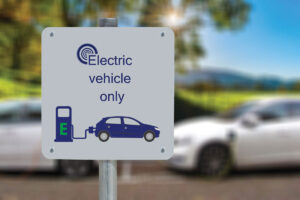If your smartphone battery has become a large share of your daily thoughts, just wait … the battery market is booming.
Innovators are developing washable and bendable batteries to heat your gloves or be sewn into athletic wear to help track your exercise routine.
Electric utilities use batteries for slightly more practical reasons–to make electricity more reliable and compatible with renewable energy sources. Also, the booming electric vehicle market has been made possible by dramatic advancements in battery technology.
Analysts estimate the world battery market value at more than $100 billion and project it will grow more than 10 percent annually over the next five years. People need batteries for their phones, laptops, power tools, watches and electric vehicles, and they want them to last longer. They want them smaller. They want them cheaper. And researchers and entrepreneurs are busy meeting those demands.
EVs
Electric vehicles (EVs), which run on large, rechargeable batteries, are a leading example of the trend. Ten years ago, there were hardly any EVs on the road. But in 2020, EV sales hit 3 million, and now there are 10 million on the road worldwide. That growth is expected to continue.
Six of this year’s Super Bowl ads featured electric vehicles. Manufacturers around the world plan to spend more than $500 billion on EVs and batteries in the next eight years. Just in the U.S., 13 electric vehicle battery manufacturing plants are expected to open in the next five years.
The battery bandwagon brings strong incentives for investments to make batteries even stronger, so EVs can go farther and phones can hold more apps and feature fancier cameras. This cycle of innovation is cutting battery costs too. The price of the most popular type of rechargeable battery is down more than 90 percent from what it was 10 years ago.
Large scale batteries
Utility use of large batteries is adding efficiency and reliability to the nation’s electric grid. In 2019, the number of large-scale battery systems in the U.S. increased 28 percent.
Utilities, including electric cooperatives, use these batteries in several ways. They can smooth-out voltage and frequency differences that damage equipment and affect power quality. Batteries can also make better use of the intermittent nature of renewable energy sources. By storing excess solar energy produced during the day when electric demand is low, batteries can make that sun power available for use at night when electric demand is high.
Utility-scale battery capacity jumped 35 percent in 2020, tripled in the past five years, and by 2023, the U.S. Energy Information Administration (EIA) reports electric utilities will have 10 times the battery capacity they had in 2019.
Much of that increase, says the EIA, comes from battery systems located near large solar projects, making it easier to store electricity produced by solar panels.
Innovators are also working on new types of batteries for everyday use. Low-cost, flexible power sources could be part of clothing or wristbands. Wearable electronics are a hot market, and innovators and investors see the potential.
Whether used for making electricity more reliable or a fun new gadget to track our fitness habits, battery technology will continue to play a major role in our future.
Manufacturers around the world plan to spend more than $500 million on electric vehicles and batteries in the next eight years. The Kansas City Assembly Plant shown here is Ford’s first U.S. plant to assemble both batteries and electric vehicles. Photo courtesy of Ford










